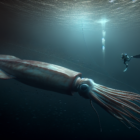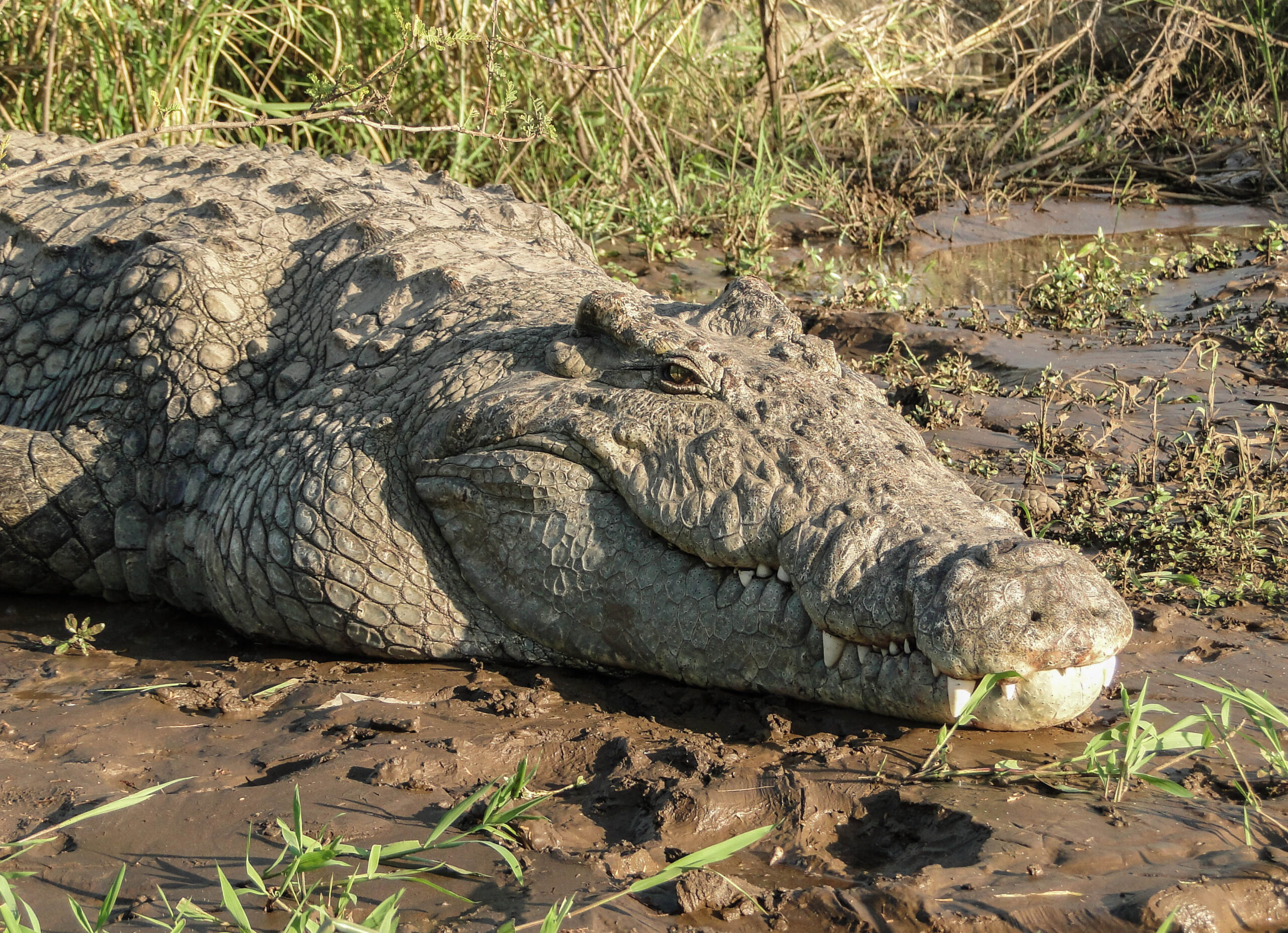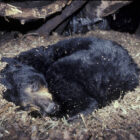Unique Animals Of The Amazon Rainforest

The Amazon River, the lifeblood of South America, is home to some of the most incredible and bizarre creatures on the planet. Stretching over 4,000 miles from its source in Peru to its mouth in Brazil, this mighty river supports an astonishing array of wildlife that has evolved to thrive in one of the world’s most unique environments.
From the towering trees that line its banks to the murky waters that flow beneath them, the Amazon Rainforest is a realm where the ordinary rules don’t apply. Here, you’ll find animals that defy explanation, with bodies shaped like giant water striders or skin that changes color like a chameleon’s. You’ll encounter creatures that can swallow their own heads whole, and others that have developed remarkable adaptations to survive in this lush but unforgiving environment.
Anaconda
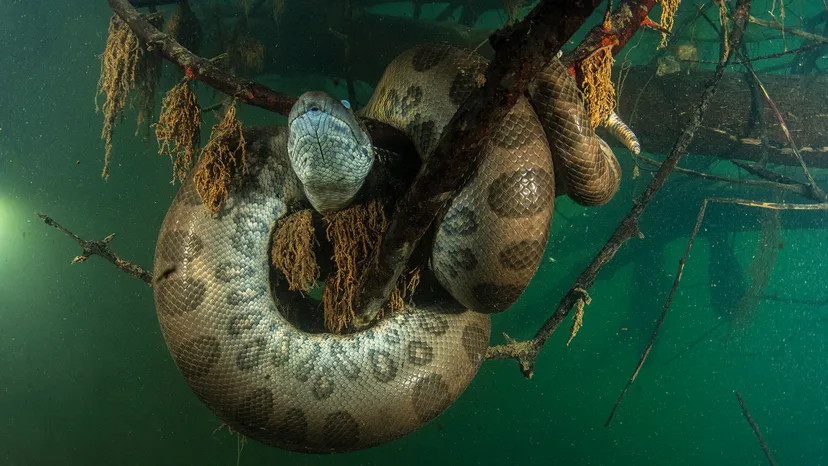
Deep in the Amazon rainforest, a legendary creature lurks beneath the surface. Its name is whispered among locals and feared by many: the anaconda (Eunectes murinus). This massive snake can grow up to 30 feet long and weigh over 500 pounds, making it one of the largest snakes in the world.
Anacondas are constrictors, meaning they kill their prey by wrapping their bodies around it and squeezing until the animal suffocates or dies from circulatory failure. They have no venom, relying solely on their incredible strength to subdue their victims.
One fascinating aspect of anaconda behavior is their unique hunting strategy. Anacondas are ambush predators, lying in wait for unsuspecting prey to wander by. When a potential meal comes into view, the snake strikes with lightning speed and precision, wrapping its body around the animal before squeezing tight.
Anacondas have an impressive appetite, consuming small mammals like rodents, opossums, and even capybaras (the world’s largest rodent). They also feed on birds, reptiles, and amphibians. In fact, anacondas are known to eat up to 10% of their body weight in a single meal.
Despite their fearsome reputation, anacondas play a crucial role in the Amazon ecosystem. As apex predators, they help regulate populations of smaller animals, keeping them from overgrazing or overbrowsing vegetation.
Interestingly, anacondas have an unusual mating ritual. Males will engage in a series of complex courtship displays, including head-bobbing and body-wrapping behaviors, to attract females. After mating, the female lays up to 80 eggs in a protected location like a burrow or hollow log. The young snakes hatch after about three months and begin their journey as independent hunters.
Fun Facts about the Anaconda
- Anacondas can go without eating for up to 6 months.
- They have an incredible sense of smell, using their highly developed olfactory system to detect prey.
- In some cases, anacondas will swallow stones or pebbles to help grind down the bones and shells of their prey in their stomachs.
Arapaima, the prehistoric fish
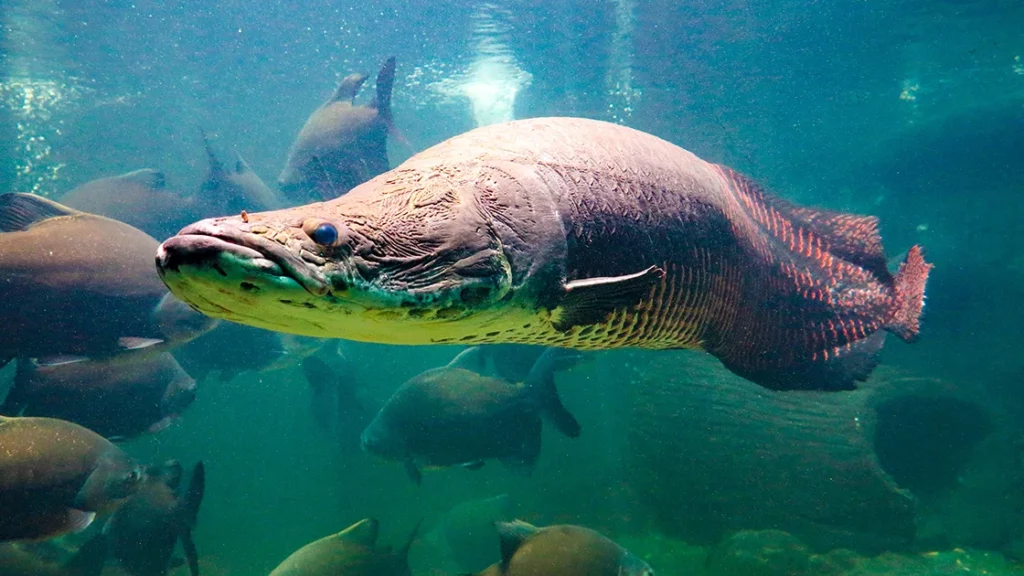
A fascinating fish species has evolved to thrive in the vast aquatic ecosystem of the Amazon River. Meet the arapaima (Arapaima gigas), or pirarucu, one of the largest freshwater fish in the world.
The arapaima can grow up to 10 feet long and weigh over 200 pounds, making it an impressive sight for any angler or naturalist. But what sets this species apart is its unique feeding behavior.
Unlike most fish that feed on small insects, crustaceans, or plankton, the arapaima has developed a remarkable ability to consume larger prey items – including other fish! This opportunistic predator will swallow smaller fish whole, using its powerful jaws and sharp teeth to crush their bones. In fact, up to 90% of an arapaima’s diet consists of small fish, crustaceans, and even occasional caimans!
Fun Facts about the Arapaima
- Arapaimas are air-breathing fish. They have a unique ability to absorb oxygen from the air using specialized organs called “labyrinthine respiratory structures” on their gills.
- These massive fish can survive out of water for up to 20 minutes by absorbing oxygen through these special organs. This adaptation allows them to rest or escape predators in areas with low water levels.
- Arapaimas are known for their impressive jumping ability, which helps them navigate shallow waters and avoid predators. They can leap as high as 6 feet (1.8 meters) out of the water.
- In some parts of the Amazon River basin, arapaima have been observed “playing” with small fish by chasing them around or even swallowing them whole before regurgitating them unharmed.
- Arapaimas are considered an important food source for many larger predators in their ecosystem, including caimans, anacondas, and jaguars.
Bullet Ants: pain in the Amazon Rainforest
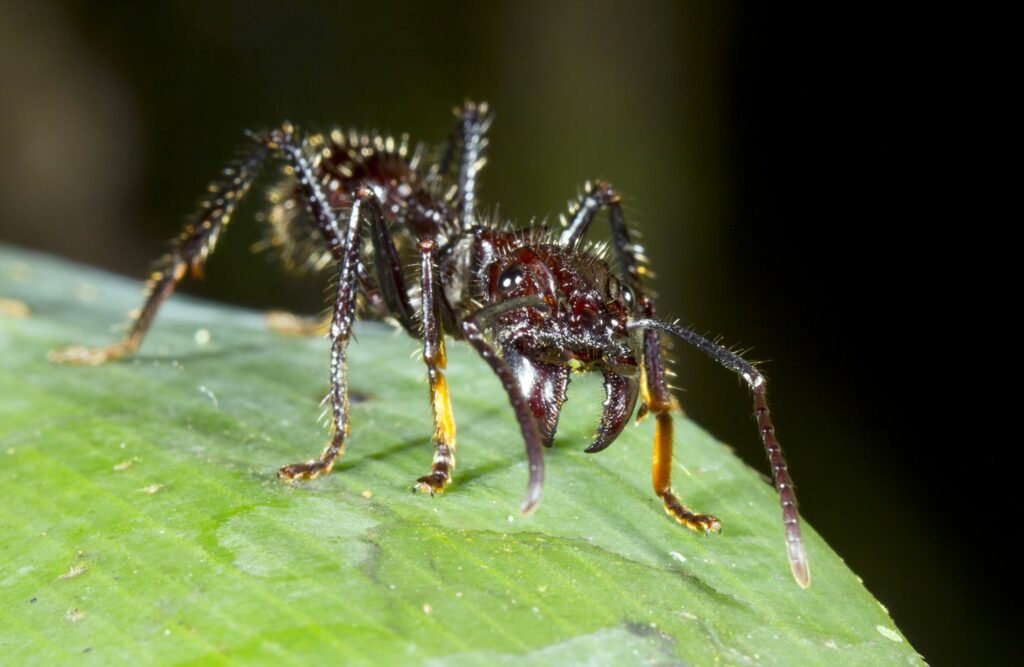
In the Amazon rainforest, there exists a creature that has earned its reputation as one of the most painful insects in the world. Meet the bullet ant (Paraponera clavata), a formidable insect with a sting that can leave even the toughest individuals writhing in agony.
The bullet ant is found throughout Central and South America, including the Amazon rainforest. These ants are known for their distinctive black bodies, which can grow up to 2 centimeters long. But it’s not just their size or appearance that makes them infamous – it’s their venomous sting.
When a bullet ant bites, its barbed stinger injects a cocktail of chemicals into the wound, including a compound called poneratoxin. This toxin is designed to immobilize prey and protect the ant from predators. In humans, however, it can cause an intense burning sensation that has been likened to being shot with a hot bullet (hence their name).
The pain caused by a bullet ant sting is unlike anything else in nature. It’s often described as excruciating, like someone pouring hot lava down your leg or arm. The discomfort can last for hours, even days, and may be accompanied by swelling, redness, and blistering.
Despite the intense suffering they inflict on their victims, bullet ants play a crucial role in the Amazon ecosystem. They are important predators of other insects, helping to regulate populations and maintain ecological balance.
In some indigenous cultures, however, the bullet ant is considered sacred or even edible (although this practice is not recommended!). In certain regions, the venom from these ants has been used for centuries as a natural anesthetic in traditional medicine.
Fun Facts about the Bullet Ant
- Bullet ants are one of the largest species of ants found in the Amazon rainforest.
- The poneratoxin compound injected by bullet ant stings can cause muscle contractions and even respiratory distress in extreme cases.
- In some parts of South America, children as young as 5 years old undergo a rite of passage called “initiation” or “coming-of-age,” where they are required to wear gloves filled with live bullet ants for several hours. This ordeal is meant to test their courage and resilience.
- The venom from bullet ant stings has been used in the development of new painkillers, as it contains a unique compound that can help numb pain without causing sedation.
Candiru
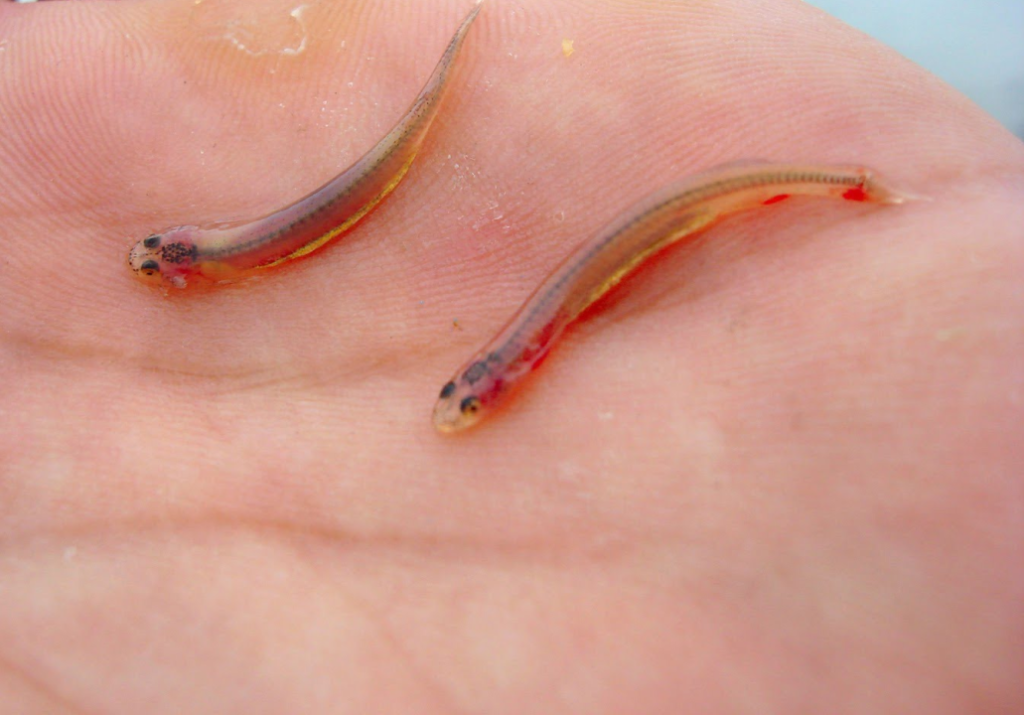
The candiru (Vandellia cirrhosa) is found throughout South America, including the Amazon River basin and its tributaries. These fish are relatively small, growing up to 10 centimeters in length, with a slender body and long, pointed snout. But it’s not their size or appearance that makes them interesting – it’s their unique defense mechanism.
When threatened by predators, candirus have developed an unusual behavior: they attach themselves to the predator’s urethra using their sharp teeth and powerful jaws! Yes, you read that correctly – these fish essentially “swim up” into a predator’s urinary tract, where they can’t be easily removed. This bizarre defense mechanism is known as “urogenital parasitism.”
The candiru’s unusual behavior has been observed in various predators, including caimans, anacondas, and even humans. In some cases, the fish will attach itself to a predator’s urethra for extended periods of time, potentially causing discomfort or even harm.
When threatened by a predator, a candiru will swim up towards its attacker’s genital area. Using their sharp teeth and powerful jaws, they’ll latch onto the urethral opening and begin to burrow into the urinary tract. Once inside, the fish can’t be easily removed without causing significant discomfort or even injury.
The candiru’s unusual defense mechanism is thought to have evolved as a way to protect themselves from predators. By attaching itself to the predator’s urethra, the candiru essentially “hijacks” its attacker’s urinary system, making it difficult for them to remove the fish without causing harm.
Fun Facts about the Candiru
- Candirus have been known to attach themselves to predators’ urethras in as little as 30 seconds.
- In some parts of the Amazon rainforest, local communities have developed a unique way to catch candirus: by using their own urine as bait. Yes, you read that correctly – humans are essentially “luring” these fish into attaching themselves to their urethra!
- The candiru’s unusual defense mechanism has inspired new ideas in medical research. For example, scientists have studied the fish’s ability to burrow through tissues and develop new methods for delivering medication or performing minimally invasive surgeries.
Capybara, the largest rodent of the Amazon Rainforest
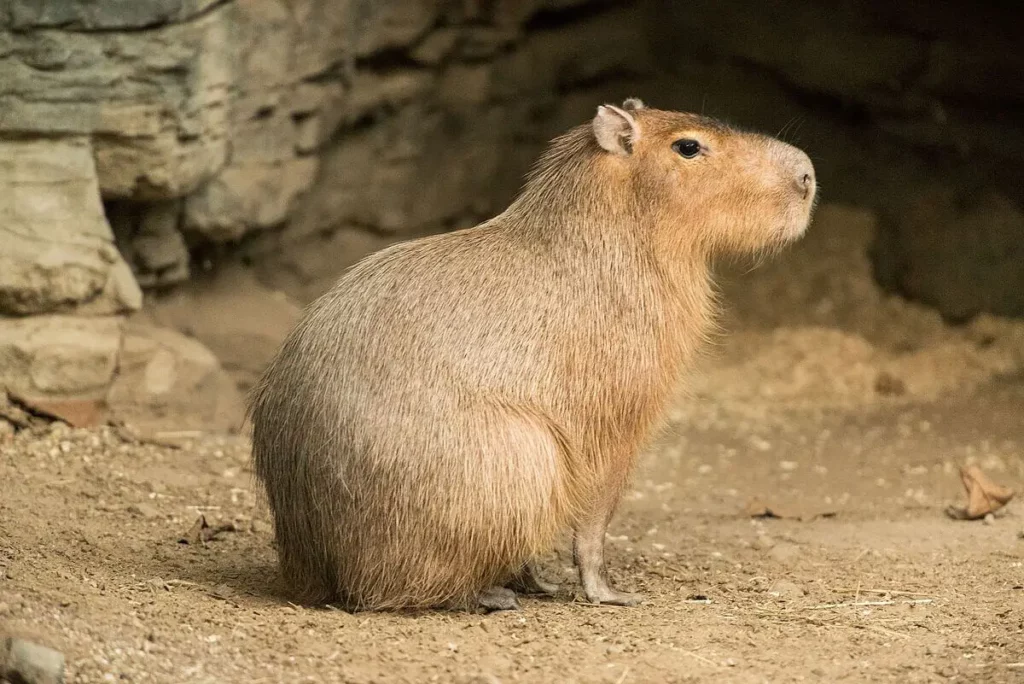
The capybara (Hydrochoerus hydrochaeris) is one of the largest rodents on Earth, growing up to 130 centimeters long and weighing as much as 66 kilograms! They’re herbivores by nature, feeding on aquatic plants, grasses, and fruits. But what makes them truly unique is their diet – which includes a surprising amount of algae.
Capybaras have developed a specialized digestive system that allows them to digest the cell walls of certain types of algae found in the Amazon River basin’s waterways. This unusual dietary adaptation has allowed capybaras to thrive in environments where other herbivores might struggle.
Capybaras are great swimmers, and they spend a significant amount of time in the water. As they forage for food, they’ll often feed on aquatic plants like water lilies or cattails. But when these plants aren’t available, capybaras will turn to algae as a source of nutrition.
Their digestive system is specially designed to break down the cell walls of certain types of algae, allowing them to extract nutrients and energy from this unusual food source. This adaptation has allowed capybaras to survive in environments where other herbivores might struggle to find enough food.
Fun Facts about the Capybara
- Capybaras are excellent swimmers. They can hold their breath for up to 5 minutes while underwater.
- In the Amazon rainforest, capybaras play a crucial role in shaping their ecosystems. By feeding on aquatic plants and algae, they help maintain the balance of these delicate environments.
- Capybaras have been known to form close bonds with each other – often living in large groups called “herds.” These social structures are rare among rodents.
- In some parts of South America, capybara meat is considered a delicacy. However, this practice has raised concerns about the impact on local ecosystems and the welfare of these remarkable animals.
Giant Leech
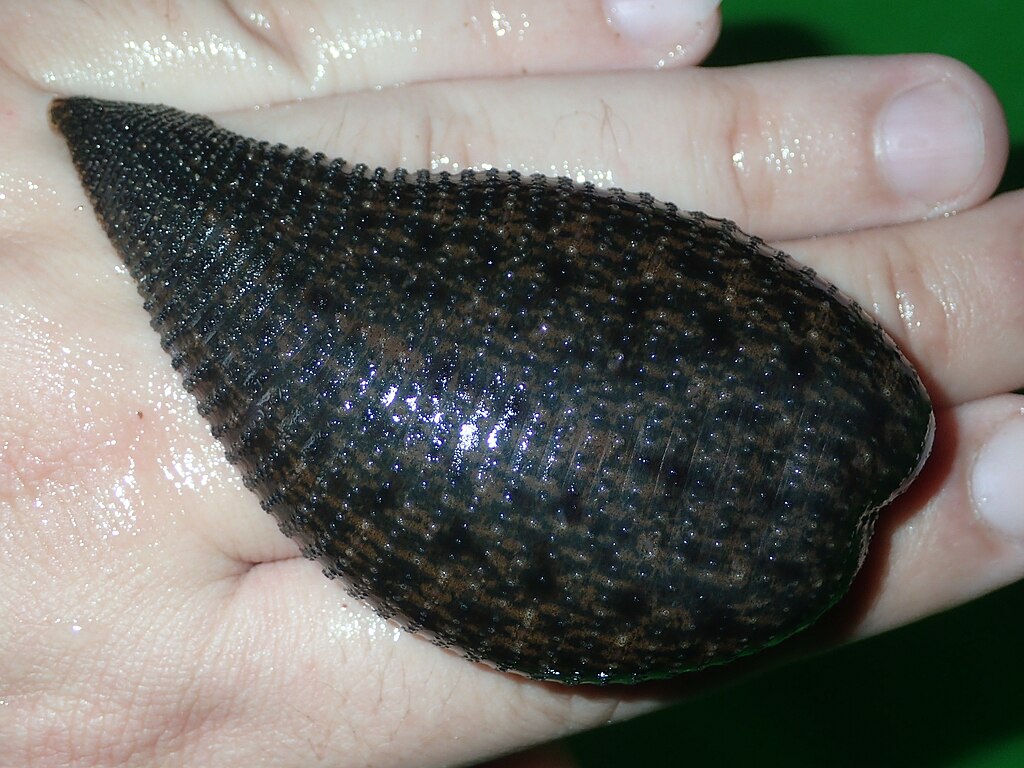
In the depths of the Amazon Rainforest, there exists a creature that has earned its place in the annals of fear. Meet the giant leech (Haementeria ghilianii), a blood-sucking invertebrate that’s found throughout the Amazon River.
The giant leech is one of the largest species of leeches on Earth, growing up to 40 centimeters long. They’re segmented worms with a soft, slimy body and a pair of retractable jaws. Their most distinctive feature? A mouthful of razor-sharp teeth designed for piercing skin and sipping blood.
Giant leeches are found in freshwater habitats like lakes, rivers, and ponds. They spend their days burrowing into sediment or hiding beneath rocks, waiting for unsuspecting prey to wander by. When a potential meal comes along – be it fish, frogs, birds, or even humans – the giant leech springs into action.
Using its powerful jaws, the leech attaches itself to its host’s skin and begins to feed on their blood. This process can take anywhere from 15 minutes to several hours, depending on the size of the meal and the satisfaction level of the leech.
Fun Facts about Giant Leeches
- The giant leech’s blood-sucking abilities have led to its use in medical research – specifically for the study of wound healing.
- In some parts of North America, giant leeches are considered a nuisance by fishermen. Why? Because they can attach themselves to fish hooks, making it difficult to reel them in.
- Leeches have been used as natural bandages throughout history. They were applied to wounds to help clean and close the skin.
- In some cultures, leeches are believed to possess mystical powers – such as healing properties or even the ability to grant good luck.
The Hoatzin
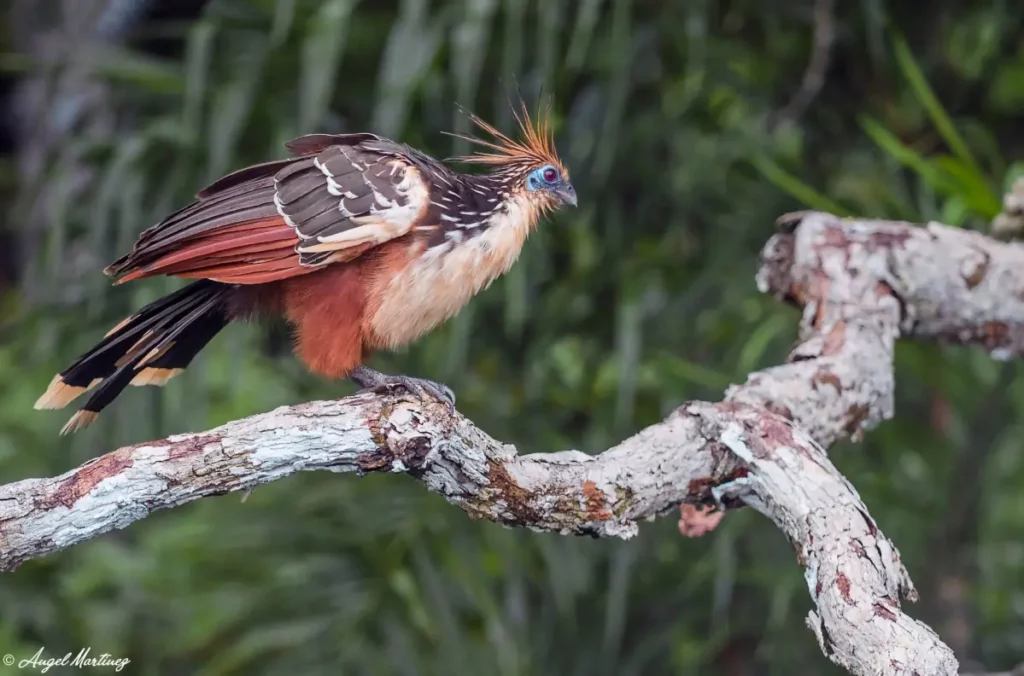
In the lush rainforests of South America, there exists a bird that has adapted to its environment in a rather unconventional way. Meet the hoatzin (Opisthocomus hoazin), a peculiar species that’s found throughout the Amazon and Orinoco river basins.
The hoatzin is a medium-sized bird with a distinctive appearance – it has a shaggy crest on its head, long neck, and powerful legs. But what sets this bird apart from others is its unusual feeding habits.
Hoatzins are herbivores that feed on the leaves of certain tree species found in their habitat. However, they don’t just eat any old leaf: they have a special fondness for the tender shoots and young leaves of these trees.
To get to this tasty treat, hoatzins use their powerful beaks to cut through the tough outer layers of the leaves. This process is called “leaf-cutting” and it’s a crucial part of their digestive system.
But that’s not all: hoatzins use their sharp claws to tear apart the leafy greens they’ve cut, then use their beaks to rip them into smaller pieces. It’s a bit like watching a bird version of a salad bar.
Fun Facts about the Hoarzin
- Hoatzins are one of the most ancient species of birds on Earth – fossil records show that they date back over 100 million years.
- These birds have some serious claws. They use their sharp talons to tear apart leaves and even defend themselves from predators.
- Hoatzins are social creatures that live in small groups, often with multiple generations living together.
Mata mata turtle
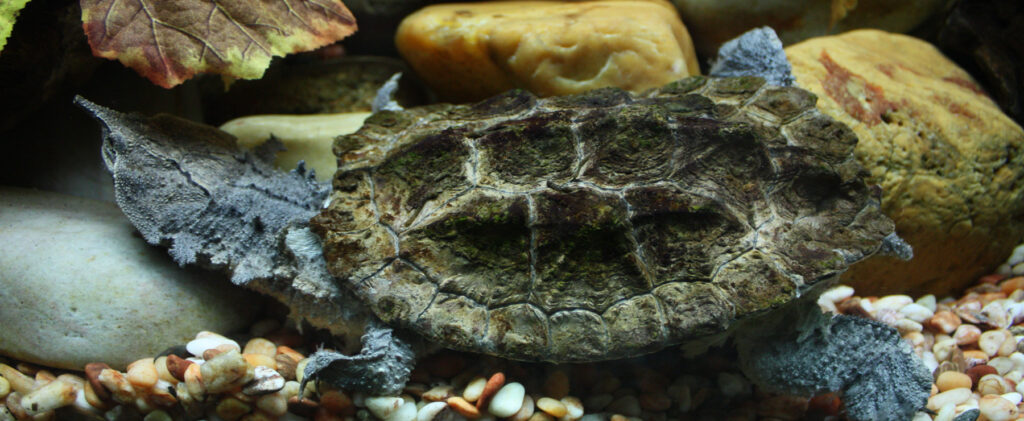
Mata mata turtles (Mata mata geographica) are relatively small, reaching lengths of about 12 inches (30 cm). They’re found in slow-moving rivers and streams throughout South America, where they spend most of their time basking in the sun or hiding among aquatic plants.
What sets these turtles apart is their unusual feeding behavior. Mata matas are carnivores that feed on a variety of small animals, including fish, crustaceans, and even other turtles.
Mata mata turtles have developed an impressive hunting strategy: they lie in wait for unsuspecting prey to swim by, then strike with lightning-fast speed. Their long, pointed snouts are perfectly adapted for snagging fish and other slippery prey.
Mata matas don’t actually eat their prey whole. Instead, they use their powerful jaws to tear apart their meals into smaller pieces.
Fun Facts about the Mata mata turtle
- Mata mata turtles have an impressive lifespan of up to 30 years in captivity.
- They’re excellent swimmers and can stay underwater for extended periods.
- Despite their relatively small size, mata matas are formidable predators that play a crucial role in maintaining the balance of their ecosystems.

